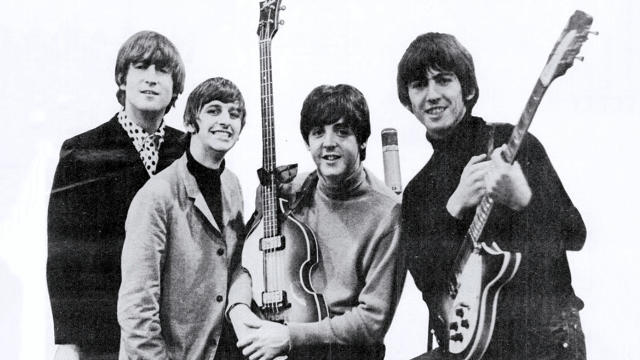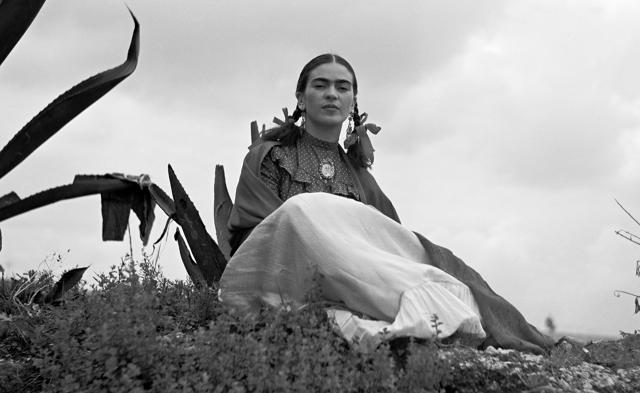7 Surprising Facts About Creativity, According To Science | Fast Company
Daydreaming. Horsing around. Aimless wandering. A sudden, traumatic loss. So many things that seem to conjure an automatic, negative connotation can actually have an interesting—indeed, often positive—impact on our creativity. In fact, the further you dig into the inner workings of the creative side of our minds, the more surprises you’re likely to uncover.
Paging through Wired to Create: Unraveling the Mysteries of the Creative Mind by Scott Barry Kaufman and Carolyn Gregoire, the pattern is hard to miss. While much about the mechanics of human creativity is obvious—meditation, for instance, has long been known to boost a number of cognitive functions—much of it is downright counterintuitive.
The book offers a broad, digestible survey of the latest science about creative thinking, often tying it to historical examples and famous names. In the process, it paints a picture that is not just informative, but useful.

1. 72% Of People Have Creative Insights In The Shower
It’s not just a cliche: Standing naked beneath a stream of hot water and letting your mind wander is good for your creativity. In a chapter that explores the links between creativity and various solitary activities (spoiler alert: Both daydreaming and taking a walk are encouraged), Gregoire and Kaufman confirm a hunch many of us have had. Something about the absolute isolation of our morning shower makes an excellent incubator for ideas. Woody Allen is just one famous person who touts the creative benefits of a long, hot shower, but he’s far from alone. In a 2014 study conducted by Kaufman, 72% of respondents around the world reported having some kind of new insight in the shower.
2. The Introverts Are Onto Something: Solitude Is Where Creativity Thrives
As productive as we can be in groups, there’s nothing quite like working—and thinking—alone. As it turns out, the more creative, imaginative networks of the brain simply work better when we’re alone. That's when we are able to engage in what neuroscientists call "constructive internal reflection," a mental state crucial to idea generation and creativity. When the outside world is tuned out, our brains are better at making certain connections, crystallizing memories, and processing information.

3. Trying New Things Makes You More Creative
It stands to reason that a willingness to explore and try new things would be correlated with creativity. The Beatles’ music famously changed when they started toying with experimental tape loops and new instruments like the sitar and the Mellotron, for instance. Beat writers like Jack Kerouac chronicled real world adventures while playing fast and loose with literary conventions.
As it turns out, there’s a major neuroscientific basis for the link between openness to new experience and creative thinking. Exploration is tied to the neurotransmitter dopamine, which also plays a role in motivation and learning (among other things) and "facilitates psychological plasticity, a tendency to explore and engage flexibly with new things," the authors write. In fact, a pile of scientific research reviewed by Kaufman and Gregoire suggests that, in their words, "the drive for exploration, in its many forms, may be the single most important personal factor predicting creative achievement."
4. Trust Your Intuition, That’s How LSD Was Discovered
The story of how chemist Albert Hofmann discovered LSD, and then famously embarked on the world’s first acid trip, is well-known among those interested in medicine and psychedelic culture. But what’s less widely known is one detail: Hoffmann had synthesized LSD-25 (one of several chemical combinations he had created) a full five years before he decided to go back and synthesize it again and continue to experiment with it. Why? He just had a hunch.
This type of intuition—the form of less-than-conscious thinking revered by Steve Jobs (also a fan of LSD, incidentally) as "more powerful than intellect"—led to the discovery of a drug that would go on to have an enormous impact on music and popular culture. It even piqued the interest of the CIA, who conducted massive experiments into its mind-altering capabilities.
The unconscious mind may be a much bigger deal than we ever realized. Intuition and the sudden flashes of insight that sometimes spring from it are of great—and still little understood—interest to neuroscientists and psychologists. According to the authors, 1992 research published in American Psychology suggests that "nonconscious processes may indeed be faster and structurally more sophisticated than our conscious thinking systems."

5. Trauma Has Hidden Creative Properties
Frida Kahlo. John Lennon. Paul McCartney. Truman Capote. Robin Williams. Jerry Garcia. Some of the most revered creative minds in modern history have one thing in common: They experienced some kind of major loss or trauma (quite often, the death of a parent or another loved one) that had an impact on their artistic endeavors. It’s no coincidence, either. Psychologists call this phenomenon "post-traumatic growth." In the face of a major loss, our brains often explore new creative outlets as part of the "rebuilding" process of our lives, especially as our perspectives, priorities, and ways of thinking about things shift around. Post-traumatic growth has been explored in hundreds of scientific studies, including a 2004 study in the Journal of Traumatic Stress showing that 70% of survivors experienced some kind of positive psychological change after a traumatic experience.
6. Daydreaming Is Surprisingly Good For Your Brain
You wouldn’t want to drift too far into your mental happy place during an important budget meeting, but the act of daydreaming can have unexpectedly positive benefits for your creativity. While fantasizing about a bouncy castle filled with corgi puppies or mentally reliving your summer vacation at your desk might not feel very productive, there’s actually more going on inside that skull of yours when your thoughts wander toward the seemingly mindless.
According to the science on daydreaming, these moments provide a sort of mental incubation period that can enhance creative thinking, long-term planning, and self awareness. Psychologists have been studying the concept of "positive-constructive daydreaming" for decades and uncovering the various ways in which, as the authors put it, "the mind’s wandering is vital to imagination and creative thought."

7. Some Of The Best Ideas Are Widely Ridiculed Before They’re Revered
History is filled with examples of discoveries and ideas that were initially rejected before being accepted as the norm. For example, Galileo was famously condemned for sharing astronomical discoveries that conflicted with Catholic theology at the time. Hungarian physician Ignaz Semmelweis was committed to an insane asylum after losing his job for suggesting, in the 19th century, the radical notion that infections could be spread by germs on doctors’ hands in hospitals. In 1600, philosopher Giordano Bruno was burned at the stake for the heresy of proposing that the universe might be infinite.
As it turns out, this resistance to new, unconventional ideas has psychological underpinnings, and indeed, continues well into modern times. In 2009, one paper published in Scientometrics examined examples of Nobel Prize-winning ideas and discoveries that were initially resisted by the scientific community, demonstrating a systemic pattern of skepticism directed at paradigm-challenging theories.
This trend is no coincidence. Psychologists at Cornell University conducted a study that showed that we have an implicit bias against less conventional, practical-seeming ideas. This tendency apparently runs deep as studies going back to the 1950s have shown people to be prone to conforming to popular opinions and perspectives. Research suggests that whatever nonconformist tendencies we may have as children are often driven out of us by the rote learning and direct instruction utilized in schools, which may counteract our more exploratory and creative modes of thinking and learning. "In fact," Kaufman and Gregoire write, "teachers have been found to display a clear preference for students who show less creativity."
